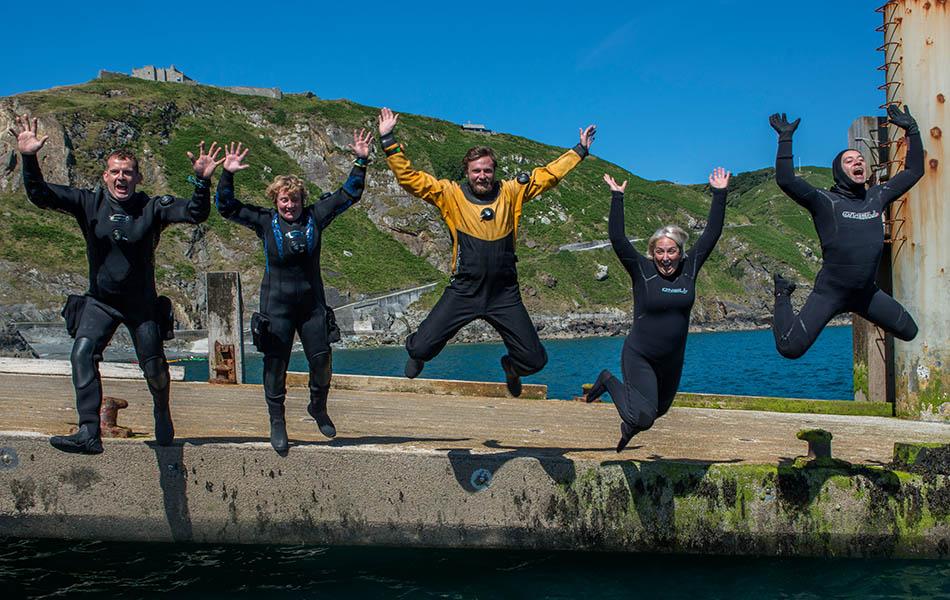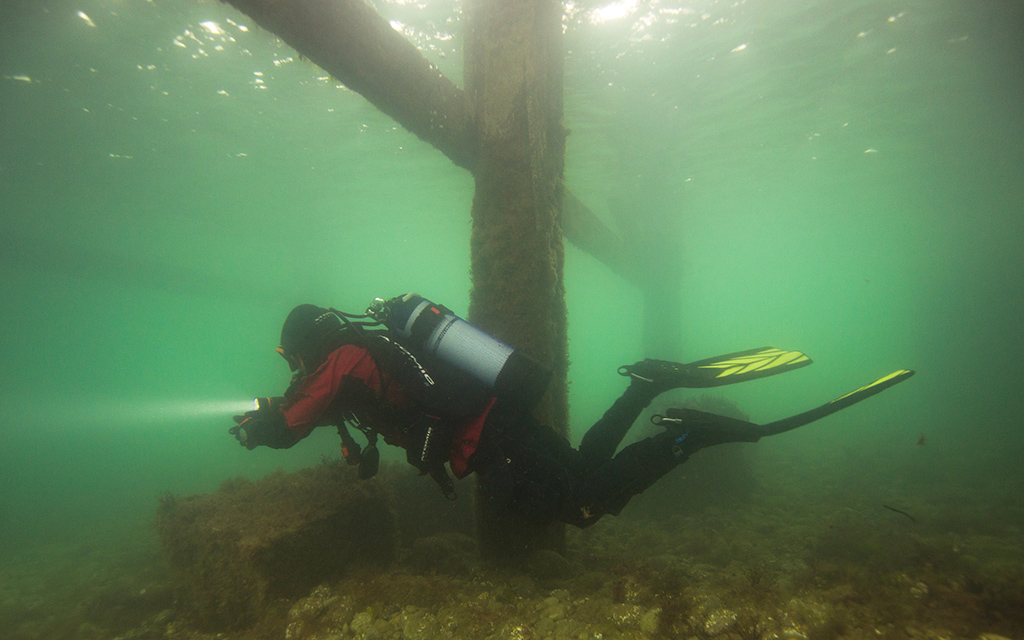
With the seasonal break in full swing and the countdown on for the New Year, now’s the time to start thinking about your UK dive site ambitions for the next 12 months.
Whether its wrecks, scenic, marine life, or all of the above that float your boat, the UK coastline has something for everyone.
With so many to choose from, we’ve put together what we think are 12 of the best UK dive sites for all diver grades to help you pull together your final 2024 diving wish list.
1. Swanage
A true dive location for all levels, there is so much to enjoy about this Dorset classic. From the iconic Swanage Pier and the marine life nurseries that shelter beneath its Victorian structure to wreck staples such as the SS Kyarra and the Fleur De Lys, all set within a quintessential seaside town, Swanage never disappoints. A great way to kick start a summer of UK diving.
Depth range: 5m – 30m+ Min. dive level required: Ocean Diver trainee
Après-dive: Try the Sea Breeze restaurant for delicious fish and chips right on the seafront; enjoy a post-dive beer or soft drink at the nearby Ship Inn followed by live music every weekend.
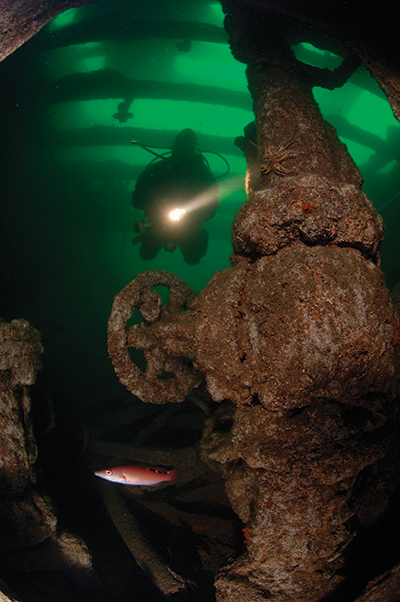
Photo credit: Charles Hood
2. James Eagan Layne (Plymouth)
This liberty ship just off the Whitsand Bay is widely considered to be the most dived UK wreck, but don’t let that put you off as ‘JEL’ is a must-do for budding wreck divers. Sunk in 1945, the wreck sits in an upright position at Ocean Diver/Sports Diver trainee depths of up to 24m.
A good training dive as it starts as a shallow 8m, the JEL is also enjoyable for all divers. Although she is starting to deteriorate, it is still possible to appreciate the shape and scale as well as the story behind the sinking of this much-loved UK wreck.
Depth range: 8m – 24m Min. dive level required: Ocean Diver trainee
Après-dive: Plymouth has a wide choice of restaurants and pubs – a behind the scenes tour at the Plymouth Gin Distillery is also a good option if your dives are blown out.
3. Lundy Island
One of the first Marine Conservation Zones in the UK, Lundy Island, a few miles off the North Devon coast, is a must-do for critter lovers. And there are enough wrecks to keep metal fans occupied too!
With good to great viz, some strong tidal currents, lively kelp reefs and impressive underwater pinnacles, expect to see plenty of wildlife, including lobsters, moon jellies and even rare pink sea fans. But it is ultimately, the grey seals that are stars of the show and you just may get a playful encounter if you are lucky!
Depth range: 3m – 30m Min. dive level required: Ocean Diver
Après-dive: If staying on or visiting Lundy Island, a drink at the Marisco Tavern is a must!
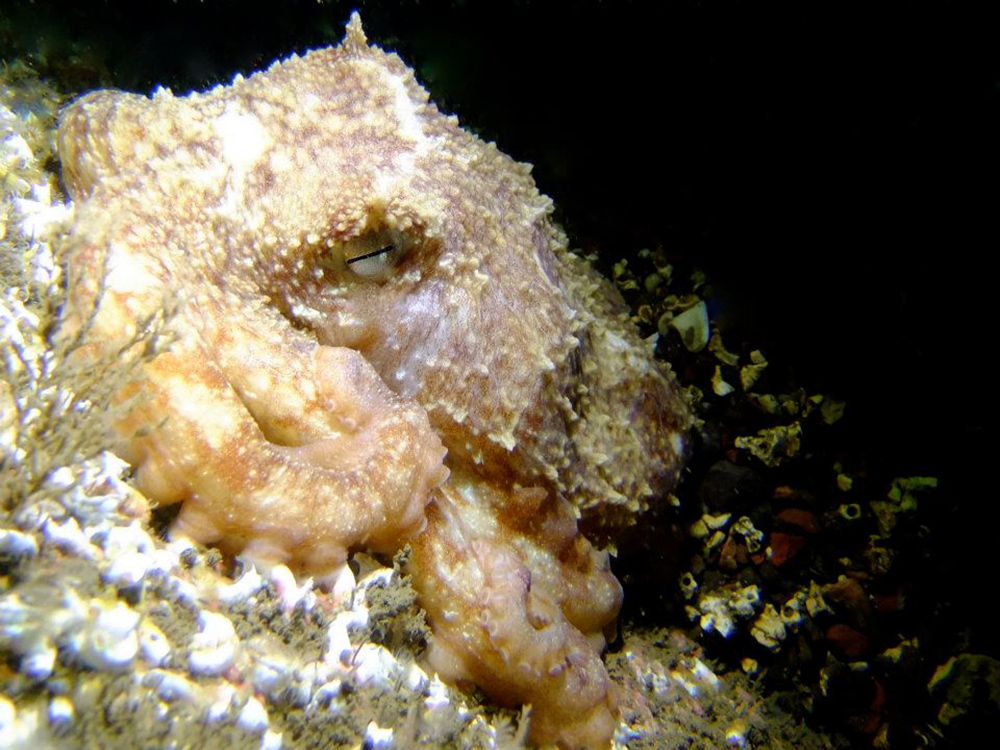
4. St Abbs Marine Reserve
With a varied coastline, deep water, shore as well as boat diving and a plethora of flora, fauna and wildlife, including the Arctic wolf fish, St Abbs, on Scotland’s Berwickshire coast, is a popular choice for club trips. And this is because it also offers shallower dives for trainees too, without compromising on the experience.
Many of the dives within the protection of St Abbs harbour, and so often accessible, despite the weather. For entry level divers, this means the opportunity to dive the classics such as Broad Craig, Big and Little Green Carrs and the famous Cathedral Rock, with its awesome double archway.
Depth range: 15m – 30m+ Min. dive level required: Ocean Diver trainee
Après-dive: For a surface interval hot cuppa or a light lunch, try EbbCarrs café on the harbour front.
5. Scapa Flow
One of the most famous dive locations in the UK, Scapa Flow, in the Orkney Islands, is often seen as a more advanced diver destination. But with such a wide choice of dive sites as well as stunning topside coastlines, Scapa also has a lot to offer the confident Sports Diver trainee.
With the main German High Fleet battleships sitting at seabed depths sub-30m, newer divers will need to look at other sites to get their Scapa fix. And the shallower sites will not disappoint. SMS Karlsruhe (max. depth 27m), the V-83 (15m), the tidal Tarbarka (12m) and the UB-116 submarine (27m) are just some of the classic dives for SD trainees to have in their sights.
Depth range: 12m – 45m+ Min. dive level required: Sports Diver trainee
Après-dive: Stromness has plenty to cater for the post-dive chill time, including the Ferry Inn, right next to the harbour.
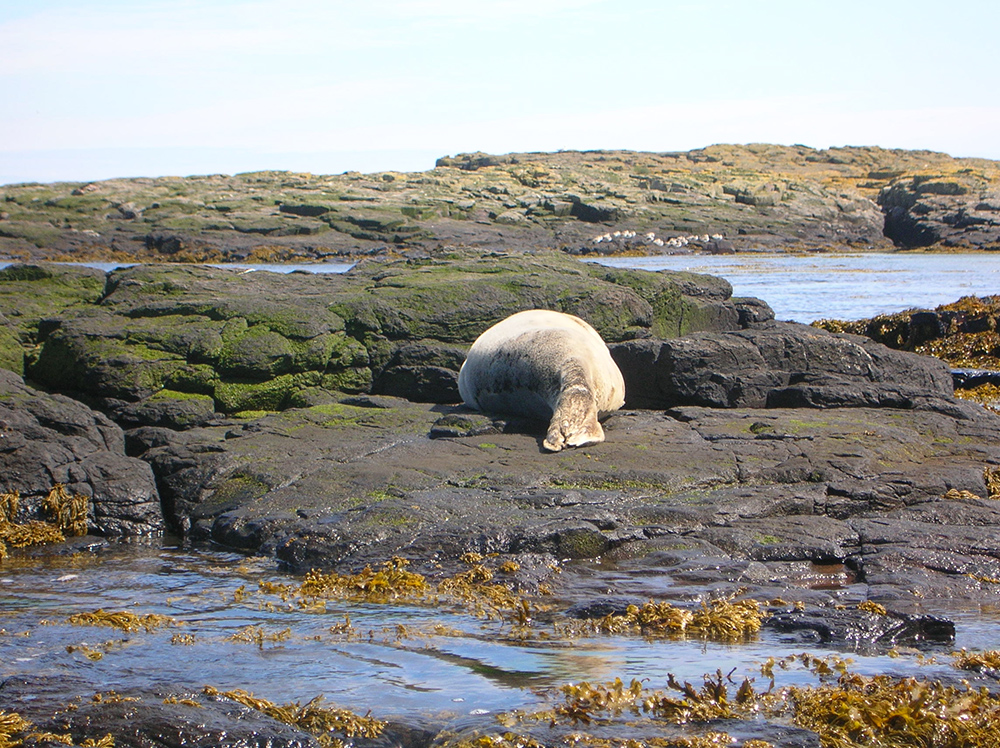
6. Farne Islands
Another classic, the Farnes has something for everyone, from beginner to advanced. And one of the main draws – and the reason the Farne Islands makes our top 12 UK dive location – are the inquisitive seals.
Just off the rugged coast of Northumbria, not only is the area renowned for wreck diving for all levels, but it is also home to one of the UK’s largest grey seal colonies. Which means even a protected shallow dive can be a dive to remember! Being underwater with these playful puppies of the sea is a remarkable experience that can inspire a lifelong love of scuba or snorkelling.
Depth range: 5m – 15m+ Min. dive level required: Ocean Diver trainee
Après-dive: Fish and chips on the Seahouses harbour front is a must – Neptune Fish Restaurant is a good place to start. And a dive trip to the Farnes is not complete without a drink in the famous Olde Ship Inn.
7. Rhoscolyn Beacon, Anglesey
Sun (hopefully!), sand and sea – Anglesey is a diver’s haven. With a varied coastline, a wide range of wrecks and plethora of marine life that includes larger animals such as pilot whales, porpoises, seal and even basking sharks, this island off the coast of North Wales has so much to offer. And it is the perfect training location for new divers and those looking to hone and develop their skills.
With its stronger currents, Rhoscolyn Beacon, on the island’s west coast, stands out for not just its scenic reef wall diving but for opportunities for, at times, exhilarating drift dives. And the trainee-friendly depths make this a great learning as well as thoroughly enjoyable dive site experience.
Depth range: 8m – 35m Min. dive level required: Ocean Diver
Après-dive: With views across Rhoscolyn bay, the White Eagle pub is a great place to chill with a cool drink or to indulge in a delicious evening meal.
8. M2, Portland, Dorset
For a truly unique diving experience, the M2 wreck site three miles outside of Lyme Bay is a must for wreck fans, and at a maximum depth of 35m, it is also a memorable site for Sports Diver depth progression.
Sunk in 1932 with the loss of 60 men, this ‘one-of-a-kind’ submarine sits upright and intact on the seabed and is an atmospheric yet sombre sight when the viz is just right. What sets her apart is that she was designed to launch a single plane from an onboard hanger. As you explore the wreck, you can still see the hanger doors slightly ajar and the remnants of the launch tracks on her deck. Whatever maximum depth you pick on this wreck, there is so much to see and take in, that the M2 will undoubtedly become a long-term favourite.
Depth range: 20m – 35m Min. dive level required: Sports Diver
Après-dive: Back in the bay, sit back and reflect on your awesome dive with a drink and a bite to eat at the welcoming Lyme Bay Café & Bar overlooking the Jurassic coast.
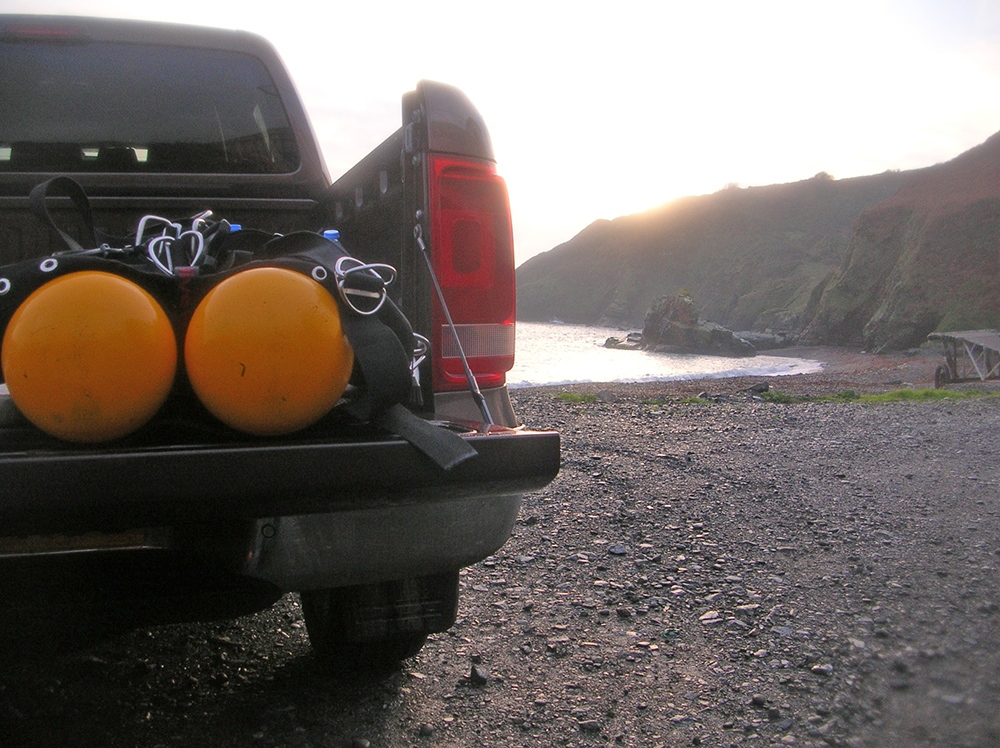
9. Porthkerris, Cornwall
For those who love shore diving, or those who want to try more, Cornwall’s Lizard Peninsula at Porthkerris won’t disappoint. Sheltered and with relatively easy access, the peninsula offers a range of shore dives that are perfect for both trainee and experienced diver alike.
The draw to this particular Cornish peninsula is the marine life that proliferate across its rocky reefs and seabed. Drawna Rocks is a particular favourite for many divers, with beginner friendly depths and a plethora of marine life, from jewel anemones to crabs, anemones and starfish. And if you’re lucky, you may also have a chance encounter with dolphins and even a basking shark.
Depth range: 20m – 35m Min. dive level required: Ocean Diver trainee
Après-dive: For a hearty breakfast or a tasty post-dive lunch, try out Fat Apples Café in nearby St Keverne.
10. Skomer Marine Reserve, Pembrokeshire
Shore dives, reefs, marine life, shallow as well as deeper wrecks, the protected marine reserve of Skomer, off the Pembrokeshire coast has it all. And the sheer variety means there is plenty to keep newer divers entertained.
With fishing regulations in place, the marine life is prolific so expect to see the best of British, including catfish, lobsters, stunning reef flora and fauna and an abundance of native fish life. And if you have a keen eye you may also see a seahorse or a dolphin or two. The wall dives in the reserve are exceptional and offer a wide range of depths for all diving grades, from 10m to 25m plus. There are also caves and deeper wrecks for advanced divers. So, if spectacular reef wall diving and marine life is your thing, make Skomer a must-do in 2024.
Depth range: 10m – 50m+ Min. dive level required: Ocean Diver trainee
Après-dive: Sample the famous haddock chowder at the Runwayskiln in nearby Marloes Sands.
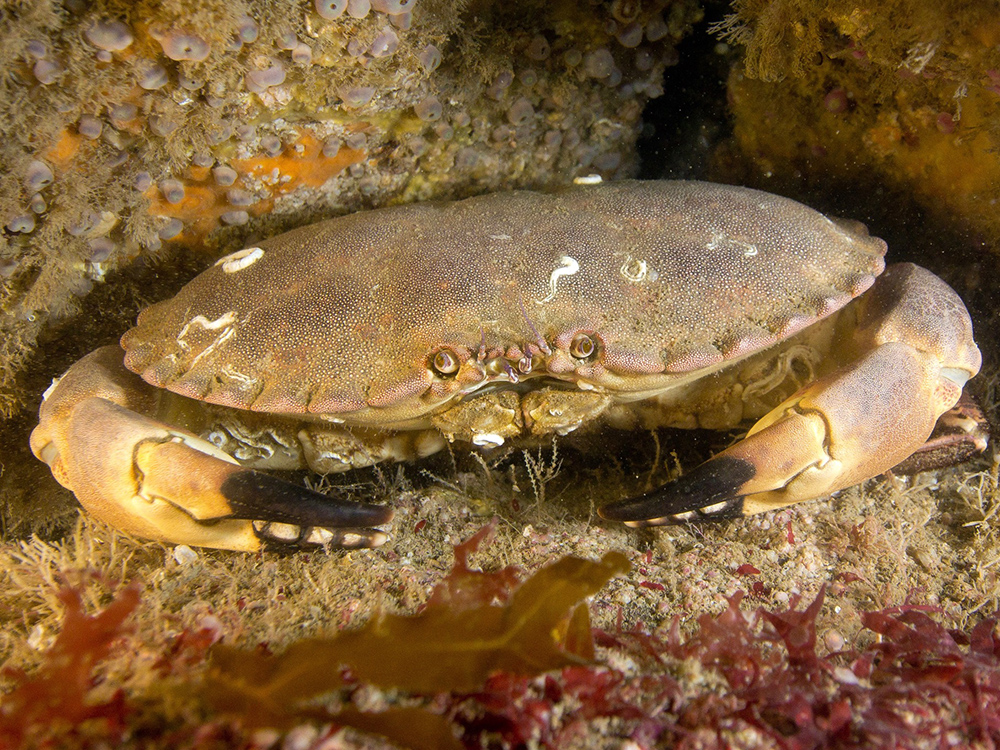
11. Falmouth
For scenic shore diving with great viz that also puts wreck and night diving within easy reach of Ocean Diver trainees, it’s easy to see why Falmouth has long been a favourite UK dive location. With something for all levels, opt for shallow reefs or for those qualified, a deeper wreck.
Meanwhile, at 18m the wreck of the Hera is ideal for a trainee with plenty of marine life to see over the two halves of the site. For night shore dives, head to Pendennis or Castle beach while a Spring-time trip to Falmouth Estuary may just reward you with a thornback ray or two. And the beauty of Falmouth is that it can be your starting point for other great dive sites across this stunning part of the Cornish coastline.
Depth range: 16m – 30m+ Min. dive level required: Ocean Diver trainee
Après-dive: Enjoy the panoramic views of the Lizard peninsula while indulging in a hearty breakfast at Falmouth’s Gylly Beach Café.
12. Sound of Mull
Sheltered by the mountains, the Sound of Mull off the west coast of Scotland is an excellent starting point to any club’s diving season. And with sites within Ocean Diver and Sports Diver trainee depths, the Sound is a good location to build skills and wreck diving experience.
Iconic wrecks such as the Breda, the Hispania and the Shuna are all accessible to Sports Divers, while sites including the Rondo and the Thesis can also accommodate confident Ocean Divers within their depth limit. And there are also numerous walls and drop offs for scenic dive fans. Add in the stunning mountains along the sound as a scenic backdrop, as well as plenty of islands and inlets to explore during a surface interval, and the Sound of Mull makes for an unforgettable dive trip for all grades.
Depth range: 5m – 50m+ Min. dive level required: Ocean Diver
Après-dive: Back in Oban, the Waterfront Fishhouse Restaurant serves locally caught fish, or enjoy a pint in the popular Oban Inn.

 Author: Alison Dando | Posted 26 Dec 2023
Author: Alison Dando | Posted 26 Dec 2023



